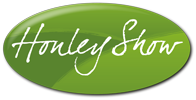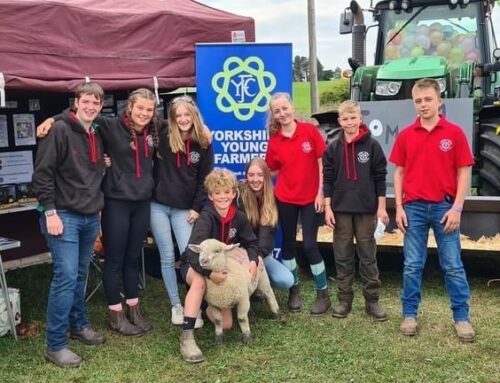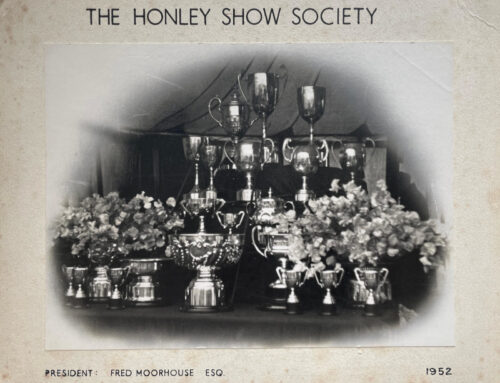Long lived Honley Show
In this our centenary year, and a year that has forced many of us to contemplate the past and the future, it seems wholly appropriate to take a moment to think about the history of the show. This programme is designed to be a snapshot of that history – we hope you enjoy it.
Agricultural Shows were regarded as one of the highlights of the year for many local communities around the Honley area. Holmfirth, Meltham and Meltham Mills, Woodsome, Kirkburton all held shows during the 19th century, but only Honley has stood the test of time.
During the 19th century, the rather grandly named Honley Floral, Horticultural and Agricultural Society held shows at the Cricket field. A newspaper report for the 1886 Show records that as well as the classes which would be expected at a Show organized by a Society with that name, there was a full programme of athletic and bicycle races. We cannot be certain when the larger Shows organized by the HFH&AS ceased, although smaller dog, flower, horticultural and fanciers shows were very much a feature of the village calendar.
The First of the “new” Shows from Honley Show Society
After the First World War and the Spanish Flu’ pandemic the decision was made to hold the annual Honley Show again. Perhaps following the example of Holmfirth Agricultural show, which had been discontinued at the beginning of the First World War and was revived in 1920.
This first annual show was not on the scale and format of the present day Honley Show.
Apart from some small livestock; rabbits, hens, pigeons and cavies, the Show had vegetable classes for local allotment holders, together with a Brass Band Contest and Gala.
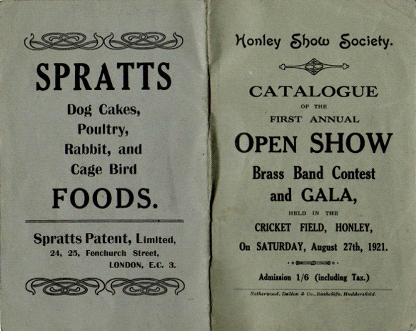
Front and back cover of 1921 Programme
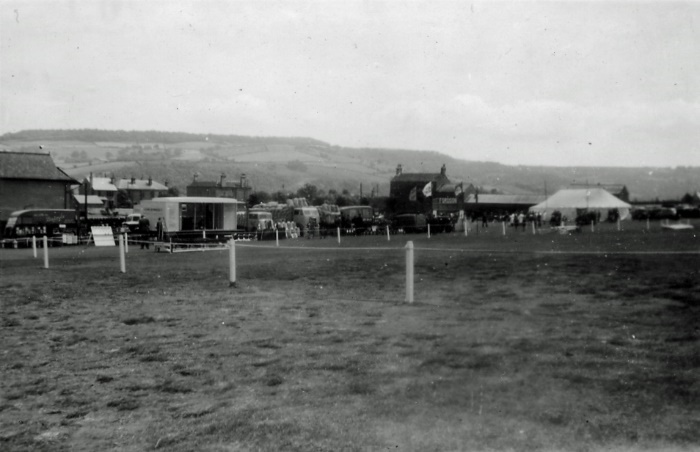
The first show – Honley Cricket Club 1921
The cricket field and the adjoining recreation ground, sometimes referred to as Marsh Fields, had been the location of the many shows held in Honley from as early as the 1800s.
So, when the ‘new’ Honley Show of 1921 was organised, this central location was the natural choice of venue.
At that time there was a surprising amount of open space in that part of the village.
The Show’s early rules clearly set out an objective which was:
‘…to hold an Annual Exhibition, in or near Honley, of horses, cattle, pigs, dogs, poultry, pigeons, rabbits, horticulture and agriculture; to encourage breeding, rearing and keeping of good stock etc.’
principles which have stood the test of time and which are upheld by the existing committee.
Horticultural Display – Norman Brooke – a committee member on the left.
The Show roared from the 1920s.
From its modest revival in 1921, the Show continued to grow and evolve into the Agricultural show it is today.
Such was the Show’s standing, it was regularly reported in newspapers across the region, the main ones being the Leeds Mercury, Yorkshire Evening Post, Yorkshire Post & Leeds Intelligencer, Sheffield Daily Telegraph, Sheffield Independent, as well as the local Huddersfield Chronicle, Holmfirth Express and the Huddersfield Examiner.
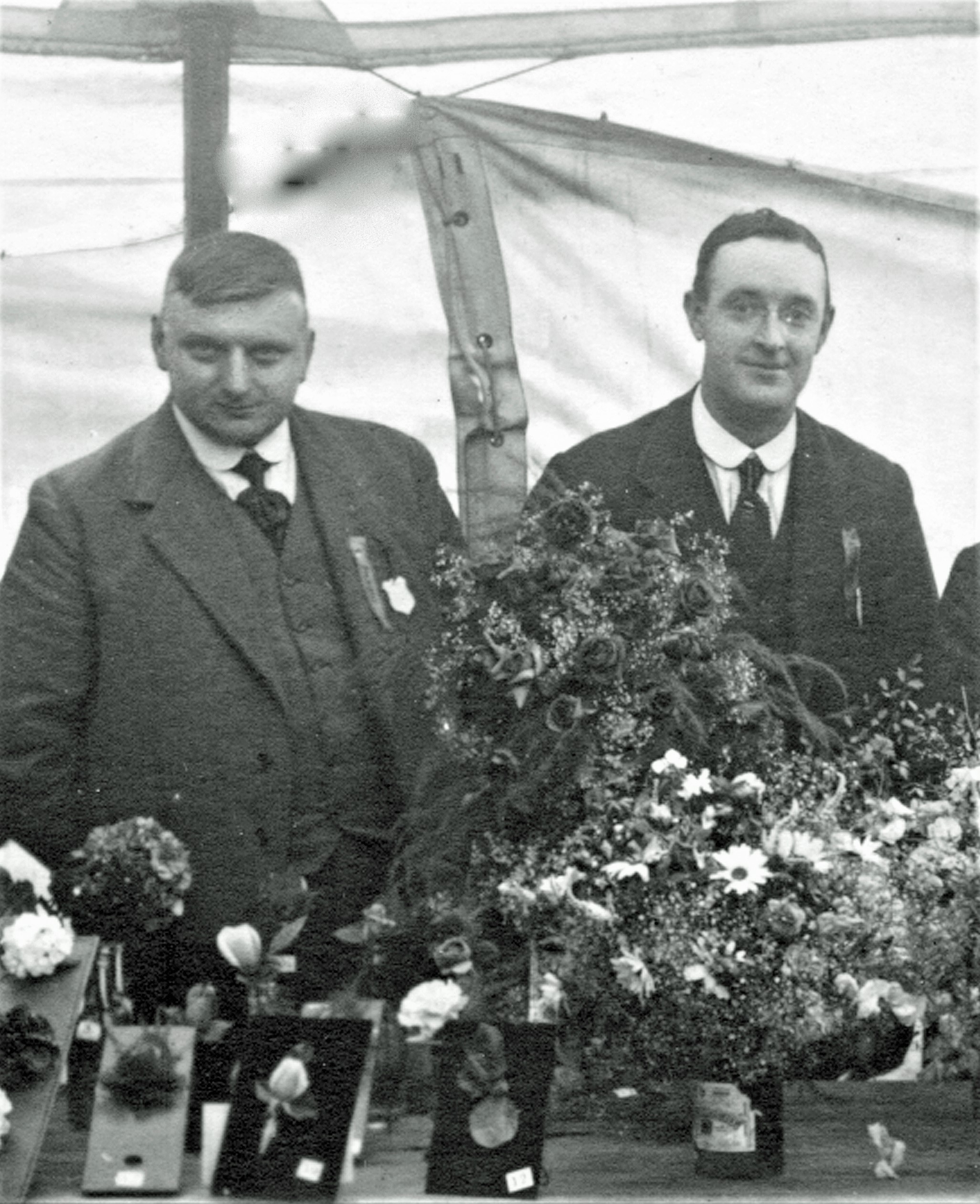
“The Show Window of Agriculture” – trotters and hooves
True to those early objectives of the Show, cattle classes have featured in the schedule throughout the show’s history. In the 1930s, the cattle section was referred to as the ‘Show Window of Agriculture’. The cattle classes feature a range of beef and dairy breeds and it probably is still one of the main attractions of a modern agricultural show.
Somewhat hard to understand is the omission of sheep in that early objectives statement, given that the moors surrounding Honley are very much ‘sheep country’. The sheep classes are now a firmly established part of the Show and the range of breeds exhibited goes beyond that of the hill varieties associated with the area. Goat classes also now feature alongside sheep and are well supported, reflecting the increasing interest in small holding activities.
Pigs though commonly kept on farms and small-holdings were dropped from the schedule in 1956 and didn’t return until the new millennium.
Of the small livestock included in the first and subsequent shows, poultry and rabbit classes are still held as the keeping and showing of these are increasingly popular.
Local pride drives the revival
In the years following the 1921 decision to revive the annual Honley Show, its reputation and popularity continued. Newspaper coverage of the 1939 show commented on the individualistic nature of the Honley people and that they should be proud of their own Show, which continued to attract record entries of 3000, and an attendance, despite the light rain and cold, of about 8,000, an indication of its early popularity which has not diminished over the years. At this time, the Honley Show was the only one day show held in the Huddersfield district.
Location, Location, Location
Unfortunately, the Show, along with many other things, was put on hold by the Second World War. As normality returned, so did the Show.
On June 11th 1949, in perfect weather, the 20th Honley Annual Show returned to its home ground at Honley Cricket Club and Recreation Ground.
The Show quickly recovered its popularity and continued to grow. By 1965 the scale of the event, increase in associated traffic, encroaching housing development and the loss of the use of the cricket field meant that a new location would be needed.
From 1966 the Show moved to fields on the outskirts of the village between the Meltham and Bradshaw roads, around Pontey Farm, which served very well for the next 3 decades with one exception. Circumstances brought about a relocation to South Crosland in 1972, taking the Show even further from the heart of the community than the subsequent move to Farnley Tyas. The weather signified its disapproval of the change of scene.
Fortunately, the show returned to Honley the following year, but as to whether the sun gave the return its blessing – who knows?
Moor land at Farnley Tyas
By the late 1990s, the potential to expand the Show prompted the need for another change of venue.
Although not in Honley, which was disappointing for the Honley community, large level fields were secured on Farnley Moor where the show has been held for the last 20 years.
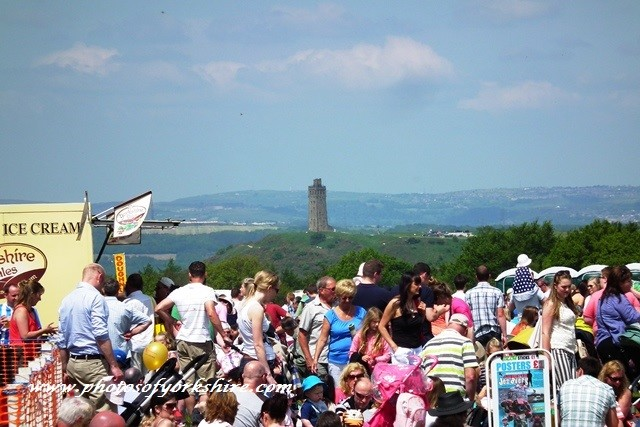
View from the Farnley Tyas site
Horses and Honley Show
The horse classes have changed over the years from being mainly working horse based; draught breeds e.g. Shires, driving and tradesman turnouts, as the role of horses for this purpose declined, especially after the Second World War.
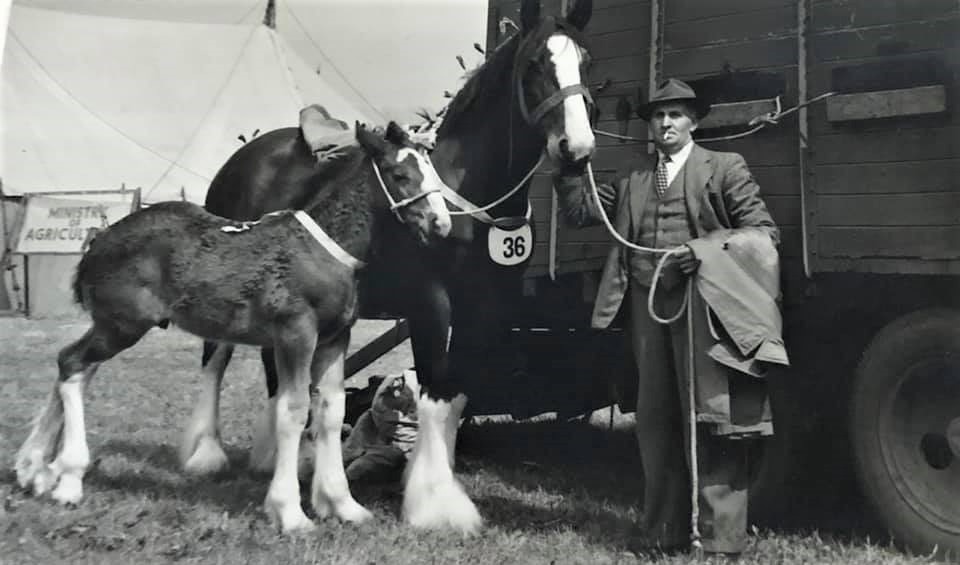
We love this picture of William Falkingham at Honley Show with a rather fine shire and foal sometime in the 1950s.
He was a local dairy farmer with a love of shires who owned Moorfield Farm up Bradshaw Road and Leather Hall Farm above the fields used by Honley Show between 1965 and 2000.
William was the grandfather of Michelle Falkingham-Bailey who still lives in Leather Hall Farm.
The Heavy Horse classes continue to be a feature and are much enjoyed by the visitors. Local haulage company Tom Moorhouse Ltd sponsor the heavy horse section as their business was founded using horses to pull wagons.
Jumping Ahead
‘Lepping’ (leaping) was one of the first new sections to be added to the Show in 1922. Still called ‘lepping’ in Ireland today, it is the forerunner of the modern sport of show jumping, with its origins in hunting.
The competition was over several rustic fences of increasing height to test style, skill and bravery of both horse and rider. The more modern format over coloured fences was adopted and increasingly attracted the ‘serious’ showjumpers, and the spectators.
These events were held on a field at Reins near to Drakes Feed Merchants. That they were not held on the cricket field is hardly surprising. Hoof prints and cricket pitches!
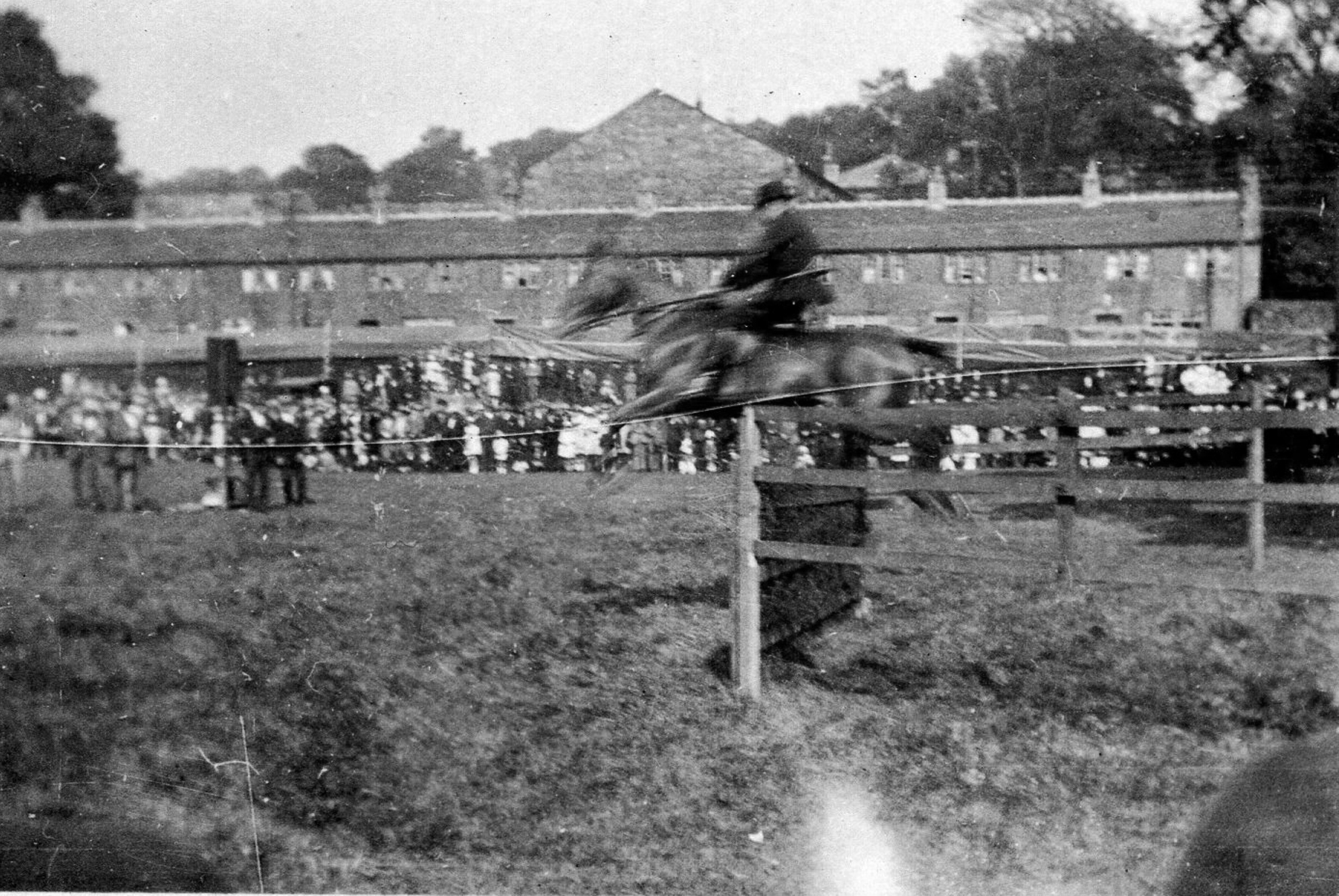
The Winner from the first ‘lepping’ in the 1922 show
The Top Horse Brass
In the 60s,70s and 80s first class, well-known riders such as Harvey, Robert and Steven Smith, John Whitaker, Mike Saywell, Andrew Fielder, competing on the horses owned by top owners such as the Massarellas, Trevor Banks and the Lannis, were regular competitors. Horses and ponies became increasingly privately owned for leisure and breeding and the horse schedule changed to reflect this with 80 classes catering for all aspects of equine interest.

Dogs hark back to 1925
One of the most successful additions to the Show schedule was that of the Dog Show in 1925. This was well attended and attracted competitors from all over the country as reported in the Huddersfield Examiner on the 1st August 1925. Even in those early years when car ownership was limited, competitors were travelling surprisingly considerable distances such was the interest in the showing of dogs. This extract from the Hull Daily Mail, August 2nd 1938 shows how locals there were proud of their Honley wins.
The Dog Show has been a major feature of the Show since that first running in 1925, rivalling the other competitive sections in size.
It was, until the late 1900s, a benched show when the cost of providing the benches became too great.
This did not deter the competitors and the Dog Show is very much a ‘show within a show’, proving a valuable asset in terms of income and visitor appeal.
The photo opposite is of The Dog Show on the Coop field below Leather Hall Farm in 1988.
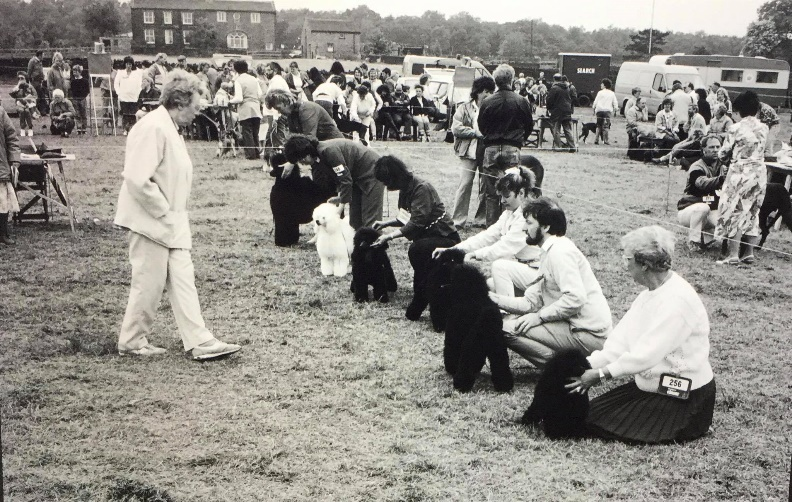
In it for the long haul
Tom Moorhouse and Son Ltd, based right in the centre of Honley, has a very long association with the show.
The company was established in Honley back in 1887 by Tom Moorhouse, making it one of the oldest transport companies in the UK.
Brothers and sister Chris Moorhouse, Tim Moorhouse and Josie Galloway are the 4th generation of the family. All three of them vividly recall that one of their first interactions with the show was picking up and taking back rabbits and pigeons to Honley Station, including pigeons and poultry from the royal estate at Sandringham.
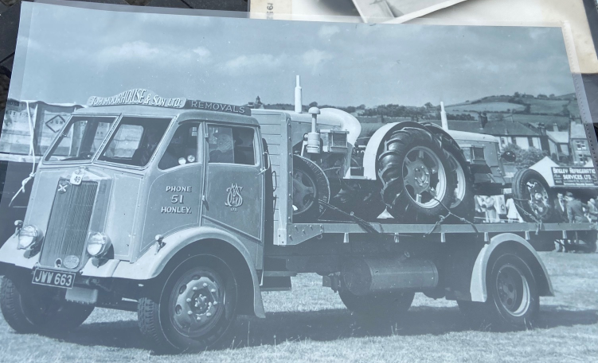
It was the founder’s son, Fred Moorhouse, who started the company’s long association with the Show in the late 1940s.
The Moorhouse family worked tirelessly in the run up to the shows – moving the hurdles, fences, pens and pay booths on their wagons. They were assisted by other local families such as the Coldwells, Taylors and Hinchliffe’s. Some of the equipment for the show was stored at Taylor’s food store.
This is a brand new Albion Chieftain FT37 Moorhouse lorry at the 1950 show with an equally shiny and new David Brown Crop Master tractor loaded. We love the 2-digit phone number!
Fred, who was initially the show manager, became President of the show in 1952 and held the position until 1963.
He is in this photo from the 1958 show with his wife Sarah and Bill Wood Senior, the father of Bill Wood – another future president.
Sadly Fred fell ill the day before his final show in 1963 and Sarah stood in for him on the day itself.

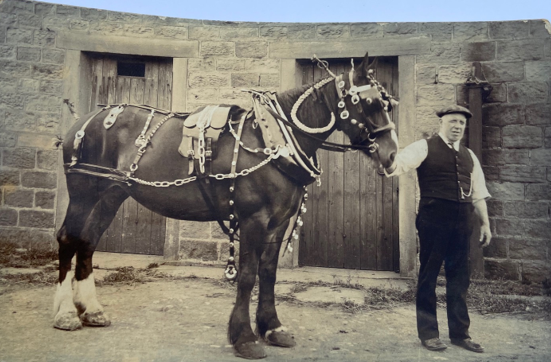
In recent years the company has stepped up to sponsor the heavy horse section in recognition of the contribution the heavy horse had at the founding of the business. This is Tom, the founder, with a beautiful shire in around 1910.
By 1929 there was only one horse left and the rest of the fleet had been completely motorised.

The Human Face of Honley Show
Although the show is all about the animals it wouldn’t happen without the intervention of a dedicated band of 2 legged volunteers.
The Honley Show baton has been passed down through some families like the Moorhouses and the Woods and more recently the Turners.
It has also passed between husband and wife notably between Mr RWP Sanderson President from 1964 – 1967 and Mrs RWP Sanderson President from 1972 – 1974, who is shown in this Treasurer’s Tent photo.
There has only been one other female president to date – Mrs J Cumming Bell MBE who was President from 1969 – 1971.
The late ‘60s and ‘70s really were a period for female emancipation.
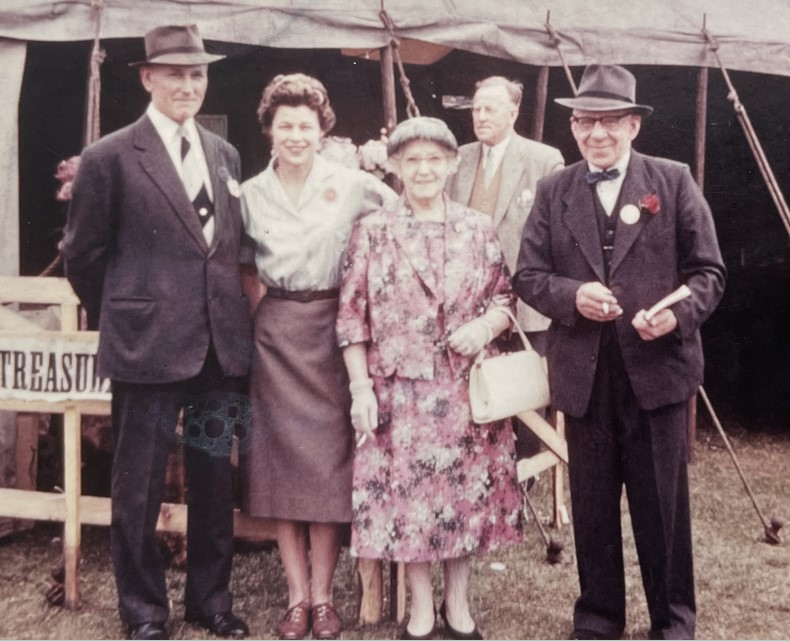

The very first President in 1921 was County Alderman Samuel Jagger JP. The image is of the inside cover of the 1921 Programme showing Officers from the first show.
There is a list of President’s on the opposite page with a few notable gaps. We would love to hear from people who could help us complete the list. There is also a list of today’s officers at the back of the programme.
The Past Presidents
The honour of being President of Honley Show is a significant one and has been held by people from many walks of life.
We know the first president in 1921 was County Alderman Samuel Jagger JP as he is very clearly mentioned on the 1921 Programme.
The Missing Years
There is a significant gap in our understanding of who was President in the years between 1921 and 1935 and we’d love to hear from anyone who could help us fill in the missing holders of the title.
We know that James Beever was President from 1935 – 1951 though from 1940 – 1947 inclusive there was no show due to the 2nd World War.
This image shows Mr Fred Moorhouse (President 1952 – 63) Mr James Beever (President 1935 – 51) Mr Bill Wood Junior (President 1995- 1997) and Mr Bill Wood Senior
Fred Moorhouse also had a long tenure as President from 1952 – 1963 as did Mr G E Lindley who held the position from 1976 -1988.
More recently the position has been held for between 2 years (Brian Grainger – 2017 -2018) and 6 years (Neville Price – 1989 -94).
The only two lady Presidents had relatively short terms – Mrs J Cumming Bell MBE (1969 – 70) and Mrs RWP Sanderson (1971 – 74)
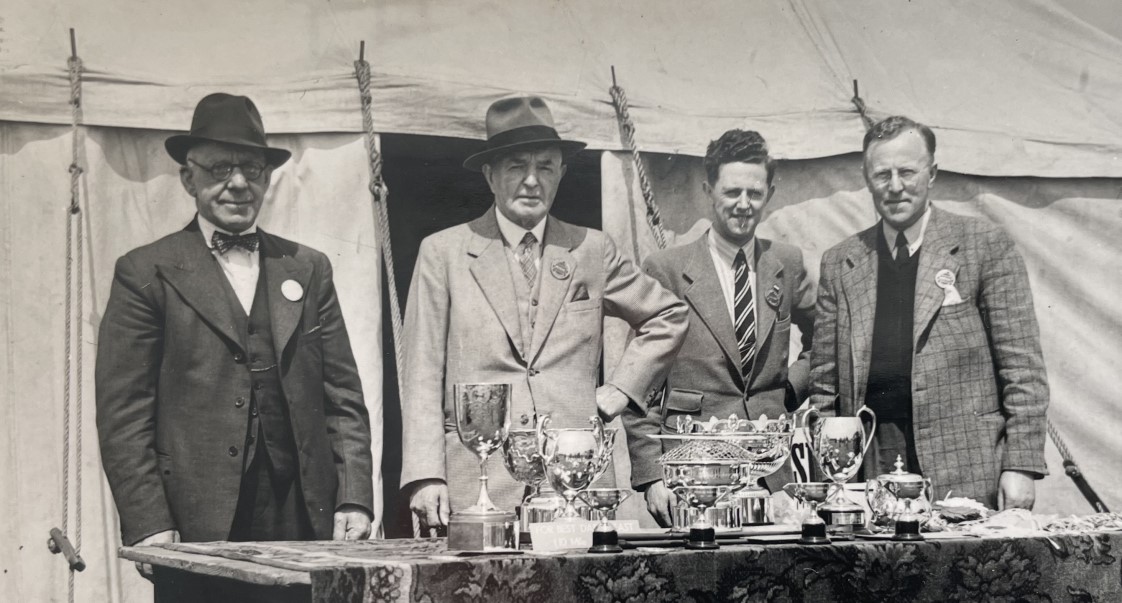
Several of the Show’s past presidents still live in Honley and we are delighted to say are still actively involved with the show. John Purvis (1998 – 2001) and Charles Kaye (2014 – 2016) are local as is Peter Aspinall the current President.
Sadly some of the more recent Presidents are no longer with us, Allen Turner (2009-2013), Donald Bamforth (2005-2008) and John Mackrill (2002-2004) but they will always be remembered for holding the position.
